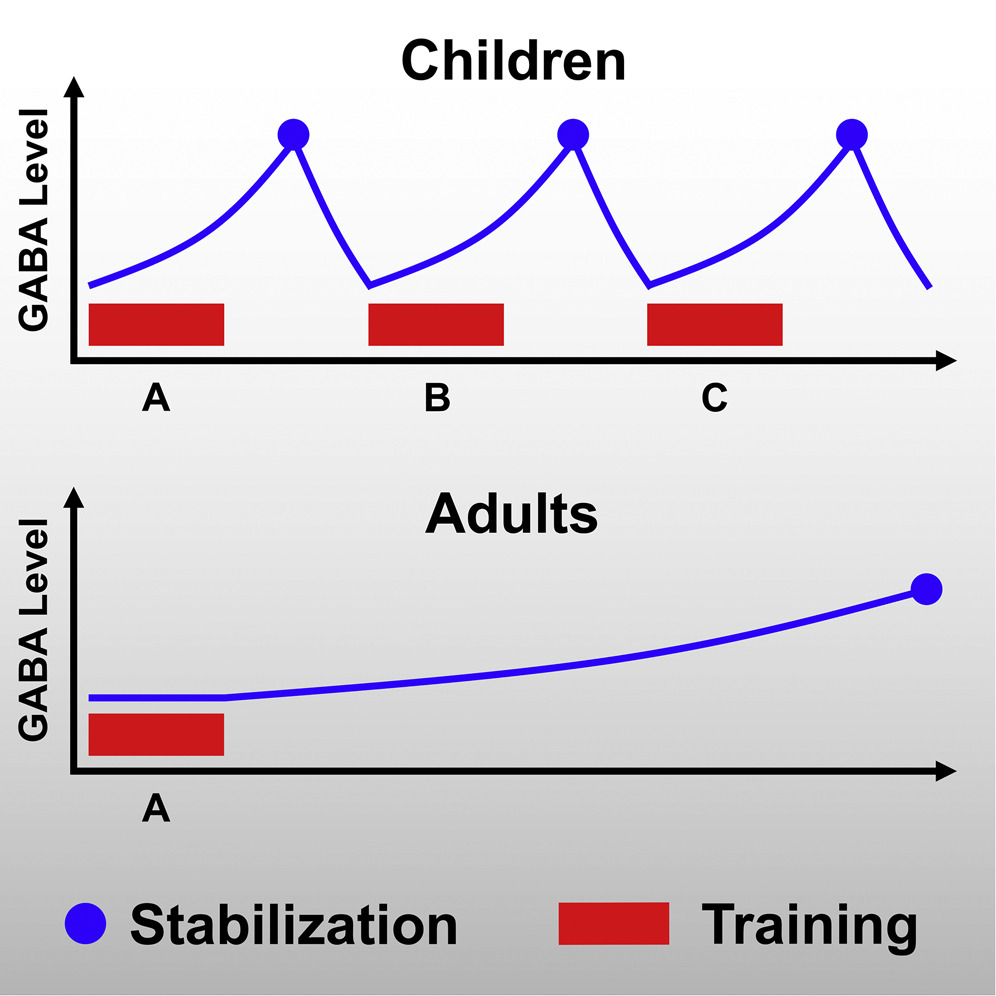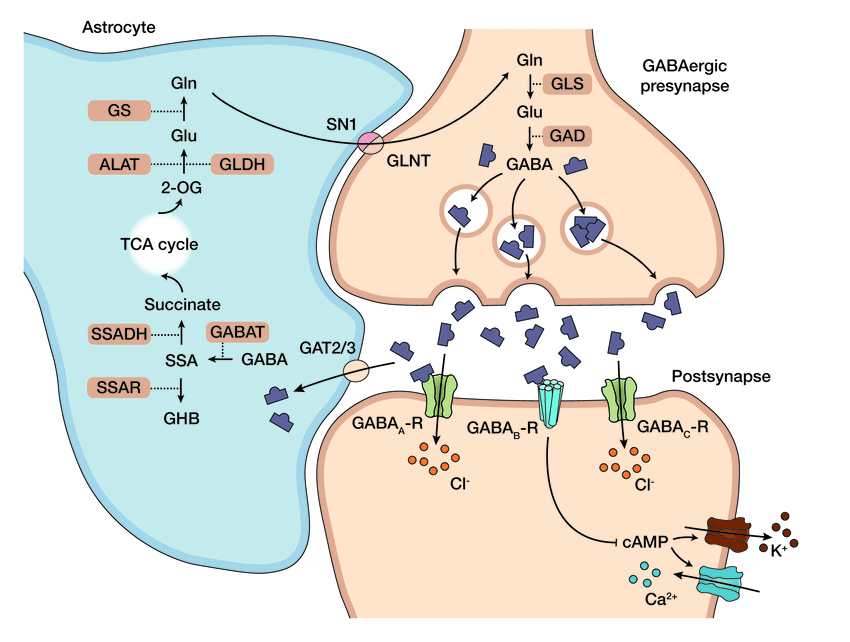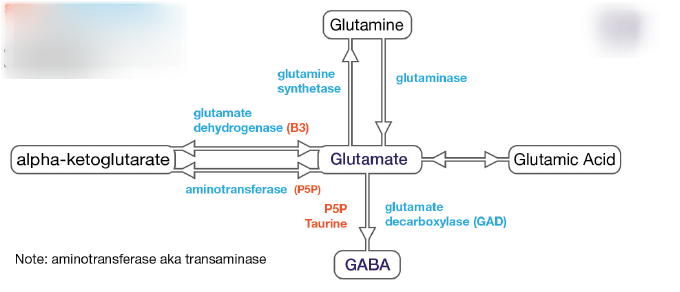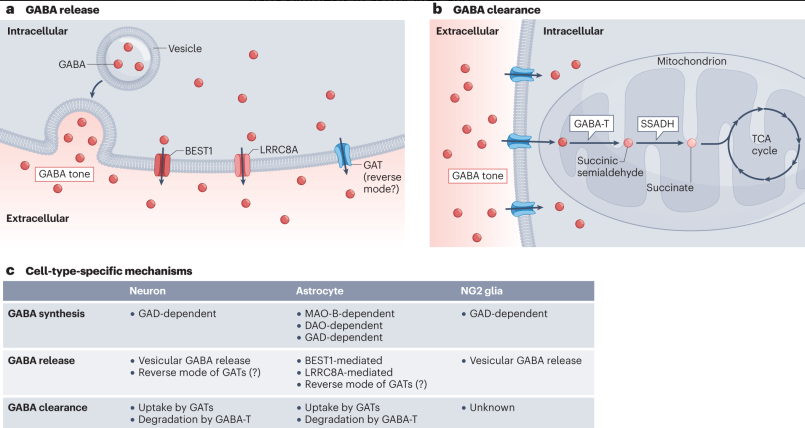GABA
links: Neurotransmitter reference: 4-11-2021
GABA (γ-amino butyric acid)
 #
#
Acts directly and as a second messenger depending on receptor type. Mostly found in the CNS, in the cerebral cortex, hypothalamus, cerebellum, retina, and olfactory bulb.
-
Lower with: R
- Nicotine, Aspirin (chronic salicylate treatment compensationally increases GAD and GABA-A density), Caffeine (chronic use increases GABA receptor content)
- Zinc inhibits GABA-A R, increases total GABA levels, and inhibits GAT R. Lowers Glutamate release and inhibits NMDA.
- Copper antagonizes GABA-A R
- [Pregnenolone] and [DHEA] blocks GABA-A receptors… which is strange because it’s an extremely potent stress inhibitor
-
Tends to raise body Temperature by controlling Vasodilation (and progesterone?) R
-
High GABA associated with dilated pupils and unresponsiveness to light and dark changes R
-
Hippocampal GABA levels correlate with retrieval performance in an associative learning paradigm - This makes sense considering Hippocampus Theta waves and everything.
-
Enter the (controversial idea of) ’neuronal shift’: The GABA excitatory/inhibitory shift in brain maturation and neurological disorders
- A decline in intracellular chloride
-
Efficient learning in children with rapid GABA boosting during and after training - visual perceptual learning.
- Children exhibit rapid boosts of GABA in the visual cortical areas that persist after training ends:
 meanwhile nothing happened during the training for adults.
meanwhile nothing happened during the training for adults. - And of course, this is in spite of inhibitory failures that have been observed in other domains such as cognitive control or attention.
- Indeed it’s not a scam, this spike is important
- They cite a lot of motor learning studies:
Neural inhibition for continual learning and memory
- During motor learning of a sequence tracking task, a decrease in MRS-mesaured GABA in the sensorimotor cortex.
- Use of learned information correlated with increased glutamate:GABA ratio in the Anterior Cingulate Cortex.
- Overlearning hyperstabilizes a skill by rapidly making neurochemical processing inhibitory-dominant: Overlearning so rapidly and strongly stabilizes the learning state that it not only becomes resilient against, but disrupts, subsequent new learning.
- They cite a lot of motor learning studies:
Neural inhibition for continual learning and memory
- Children exhibit rapid boosts of GABA in the visual cortical areas that persist after training ends:
-
GABA tone regulation and its cognitive functions in the brain
-
Receptors #
- GABA-A is fast (milliseconds) and ionotropic.
- GABA-B is slow (hundreds of milliseconds) and metabotropic
Interactions #
-
GABA inhibits Glutamate, Dopamine, Noradrenaline, Acetylcholine, and lowers Serotonin, Cortisol, Adrenocortocotropic Hormone, Histamine, and Prolactin. R
-
Activates the Parasympathetic Nervous System, which can make it hard to lose weight
-
High GABA during adrenal fatigue (probaly compensatory); mildly elevated cortisol increases GABA while high levels lower it.
Psyhchology #
- High GABA associated with behavioral disinhibiton R


